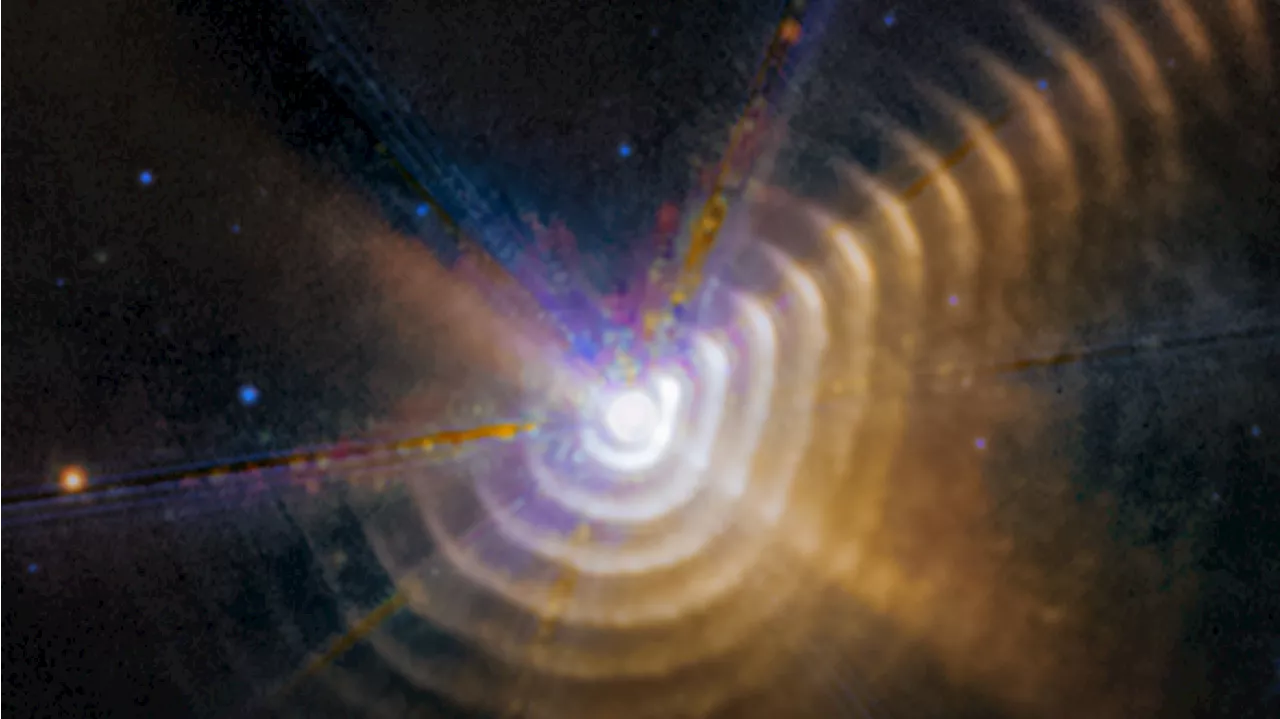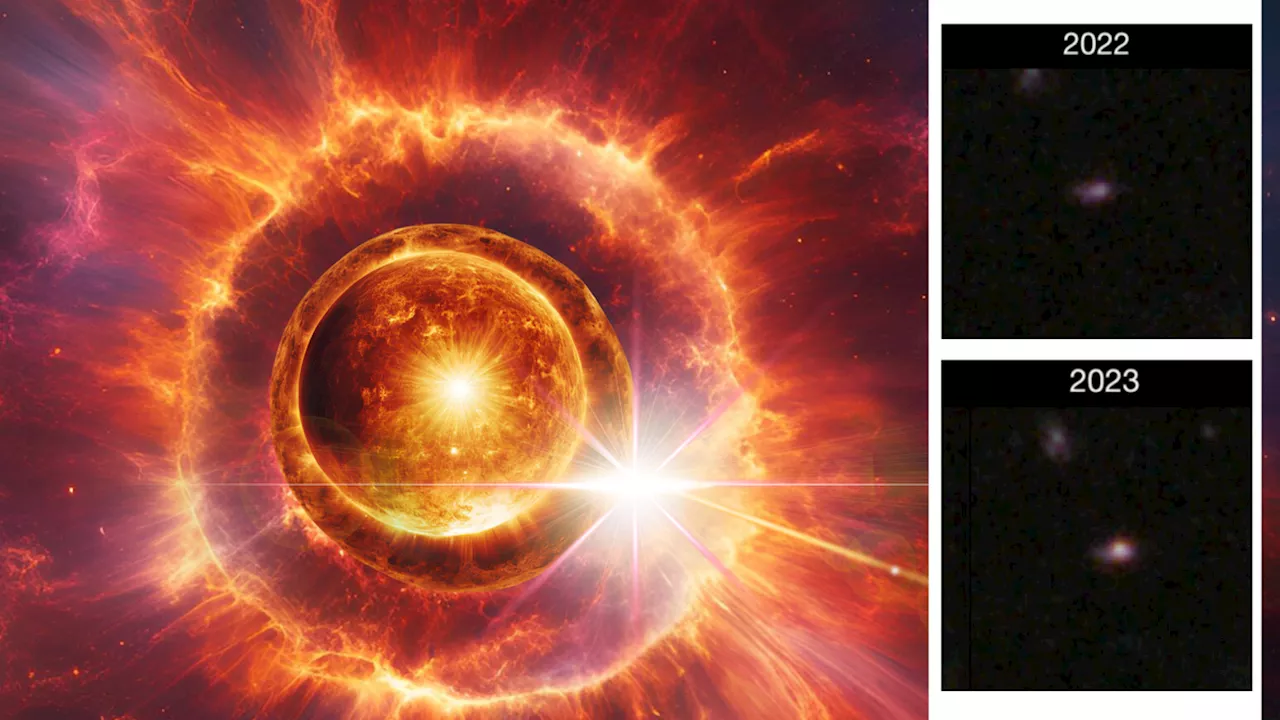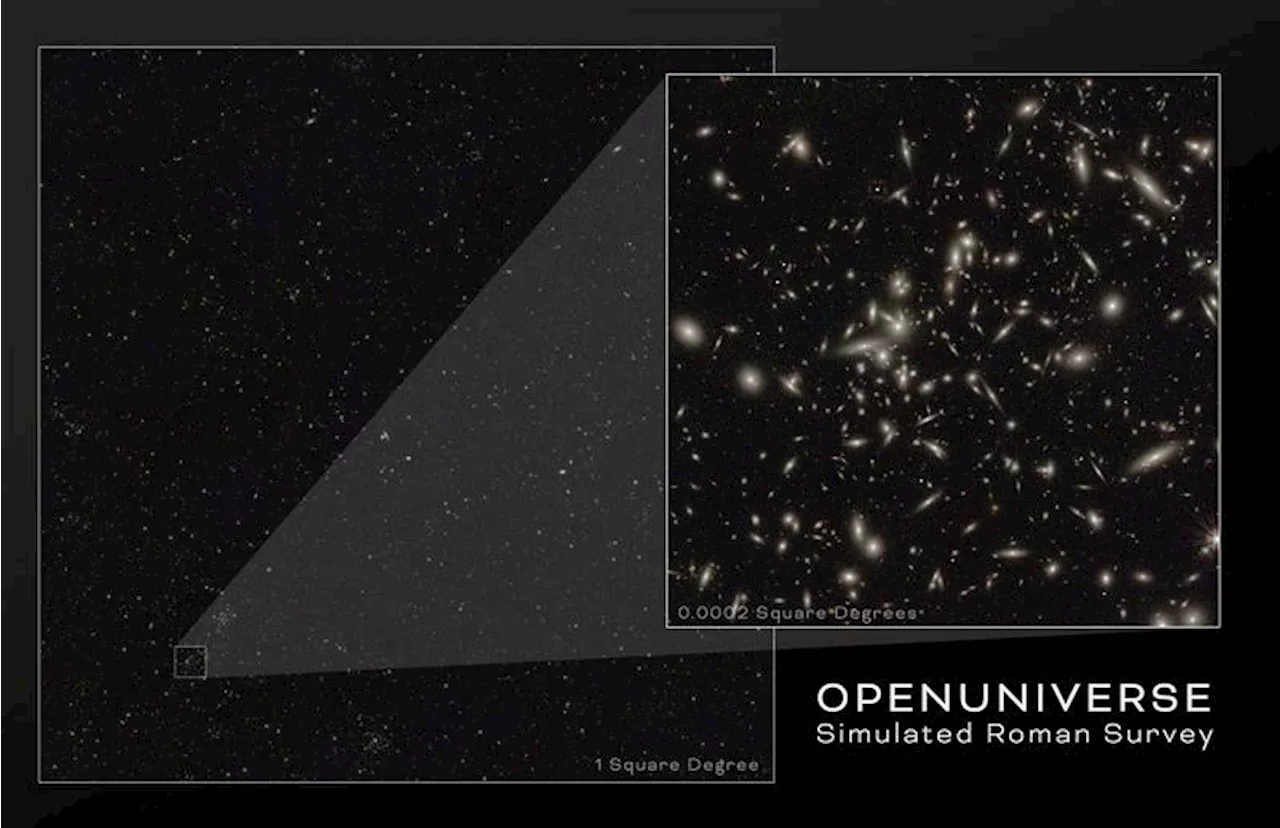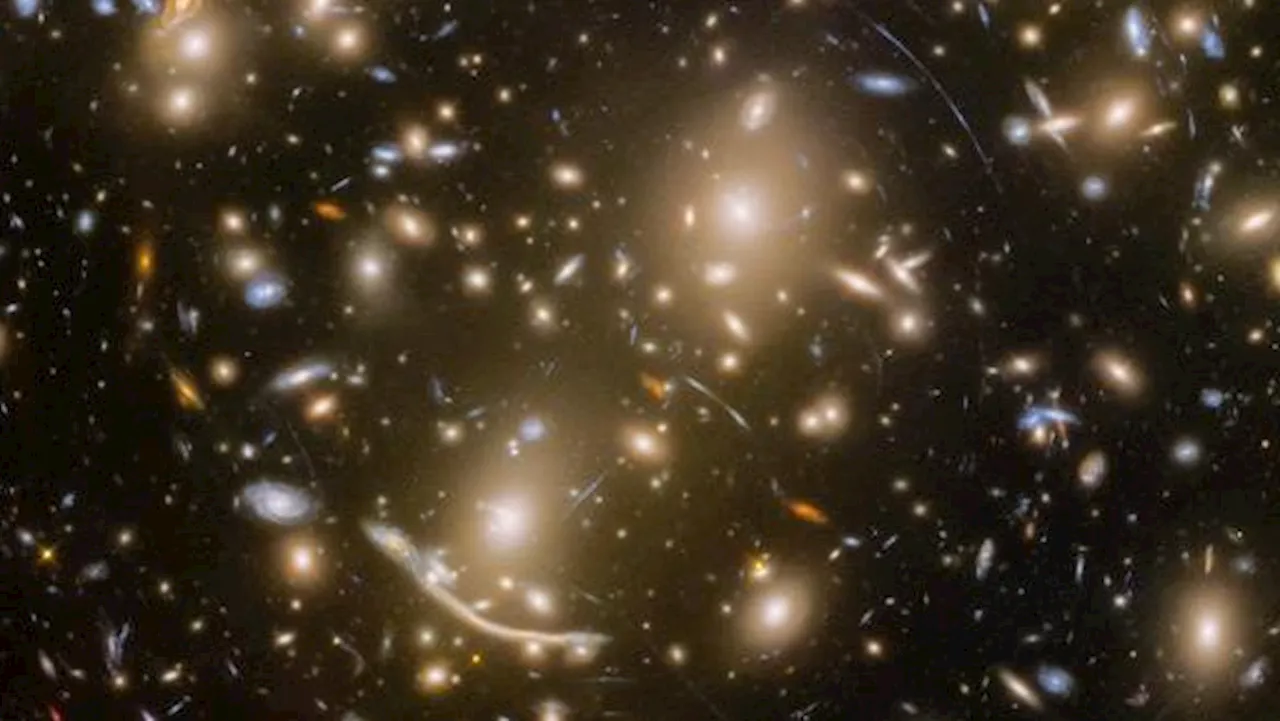Space and astronomy news
This is supernova SN 2022aajn as observed by the Hubble. It's the small blue dot near the center of the image. The space telescope is examining this SN and 99 other Type Ia SN to refine our understanding of standard candles. Image Credit: ESA/Hubble & NASA, R. J. Foley
The Cosmic Distance Ladder is ubiquitous in cosmology and does a good job. However, it still faces some problems.
The program’s name gives a good idea of its goal. It’s named “Reducing Type Ia Supernova Distance Biases by Separating Reddening and Intrinsic Color.” Prof. Ryan Foley of the University of California at Santa Cruz is the Principal Investigator. “Accurate distance measurements and unbiased cosmological constraints from Type Ia supernovae rely on proper correction for host-galaxy dust reddening that may attenuate the observed SN brightness,”. To get around this, astronomers use what’s called a “reddening law.” “A correction is made by comparing observed and intrinsic color, and using a reddening law to determine
“This issue is currently SN cosmology’s largest systematic uncertainty and if not addressed will prevent future cosmology experiments from meeting their goals,” Foley explains. He also says that the error can be as large as about 6%. That’s a lot when measuring objects that are hundreds of millions of light-years away, and even much further than that.
United States Latest News, United States Headlines
Similar News:You can also read news stories similar to this one that we have collected from other news sources.
 James Webb Space Telescope watches planet-forming dust shells zooming through spaceKeith Cooper is a freelance science journalist and editor in the United Kingdom, and has a degree in physics and astrophysics from the University of Manchester.
James Webb Space Telescope watches planet-forming dust shells zooming through spaceKeith Cooper is a freelance science journalist and editor in the United Kingdom, and has a degree in physics and astrophysics from the University of Manchester.
Read more »
 Space photo of the week: James Webb and Hubble telescopes unite to solve 'impossible' planet mysteryJamie Carter is a freelance journalist and regular Live Science contributor based in Cardiff, U.K. He is the author of A Stargazing Program For Beginners and lectures on astronomy and the natural world. Jamie regularly writes for Space.com, TechRadar.com, Forbes Science, BBC Wildlife magazine and Scientific American, and many others.
Space photo of the week: James Webb and Hubble telescopes unite to solve 'impossible' planet mysteryJamie Carter is a freelance journalist and regular Live Science contributor based in Cardiff, U.K. He is the author of A Stargazing Program For Beginners and lectures on astronomy and the natural world. Jamie regularly writes for Space.com, TechRadar.com, Forbes Science, BBC Wildlife magazine and Scientific American, and many others.
Read more »
![]() SPHEREx Space Telescope Set to Launch, Ushering in a New Era of Cosmic ExplorationThe upcoming SPHEREx mission promises to revolutionize our understanding of the universe by mapping the entire celestial sky in infrared light. This will allow scientists to study cosmic inflation, the building blocks of life, and create detailed 3D maps of the cosmos.
SPHEREx Space Telescope Set to Launch, Ushering in a New Era of Cosmic ExplorationThe upcoming SPHEREx mission promises to revolutionize our understanding of the universe by mapping the entire celestial sky in infrared light. This will allow scientists to study cosmic inflation, the building blocks of life, and create detailed 3D maps of the cosmos.
Read more »
 James Webb Space Telescope discovers one of the earliest 'truly gargantuan' supernovas ever seenRobert Lea is a science journalist in the U.K. whose articles have been published in Physics World, New Scientist, Astronomy Magazine, All About Space, Newsweek and ZME Science. He also writes about science communication for Elsevier and the European Journal of Physics. Rob holds a bachelor of science degree in physics and astronomy from the U.K.
James Webb Space Telescope discovers one of the earliest 'truly gargantuan' supernovas ever seenRobert Lea is a science journalist in the U.K. whose articles have been published in Physics World, New Scientist, Astronomy Magazine, All About Space, Newsweek and ZME Science. He also writes about science communication for Elsevier and the European Journal of Physics. Rob holds a bachelor of science degree in physics and astronomy from the U.K.
Read more »
 Million Simulated Images Preview Cosmic Discoveries with NASA's Roman Space TelescopeA team of astronomers has released over a million simulated images of the cosmos, showcasing what NASA's upcoming Nancy Grace Roman Space Telescope will see. This preview allows scientists to explore Roman's scientific goals, including studying dark matter, galaxy evolution, and transient events like supernovae.
Million Simulated Images Preview Cosmic Discoveries with NASA's Roman Space TelescopeA team of astronomers has released over a million simulated images of the cosmos, showcasing what NASA's upcoming Nancy Grace Roman Space Telescope will see. This preview allows scientists to explore Roman's scientific goals, including studying dark matter, galaxy evolution, and transient events like supernovae.
Read more »
 James Webb Space Telescope spots record-breaking collection of stars in far-flung galaxySharmila Kuthunur is a Seattle-based science journalist covering astronomy, astrophysics and space exploration. Follow her on X skuthunur.
James Webb Space Telescope spots record-breaking collection of stars in far-flung galaxySharmila Kuthunur is a Seattle-based science journalist covering astronomy, astrophysics and space exploration. Follow her on X skuthunur.
Read more »
